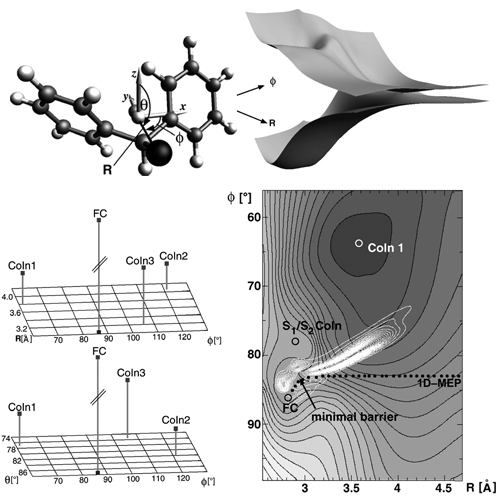Ultrafast dissociation pathways of diphenylmethyl chloride to generate reactive carbo cations
22-Feb-2008
Chemical Physics, 2008, 343, 329-39 published on 03.08.2007
Chemical Physics, online article
The primary processes in the formation of electrophilic precursor ions are studied on a microscopic scale by quantum chemical and quantum dynamical methods. For the competing reaction channels of heterolysis and homolysis in the photochemically induced dissociation of diphenylmethyl chloride, ab initio data for the ground and excited electronic states are evaluated in the gas phase. Here, the simultaneous formation of ionic and radicalic products can solely be attributed to the existence of conical intersections which are localized and characterized for the first time. The interaction of different electronic states also leads to the initial charge transfer from the phenyl pi-system to the sigma-bond of the leaving group which is essential for the fast dissociation and is explained by orbital analysis. Quantum dynamical calculations in one and two dimensions suggest that in gas phase the ion pair constitutes the main product despite its higher potential energy. Possible changes in polar solvents, where the ionic fragments are stabilized below the radical channel, are discussed.



